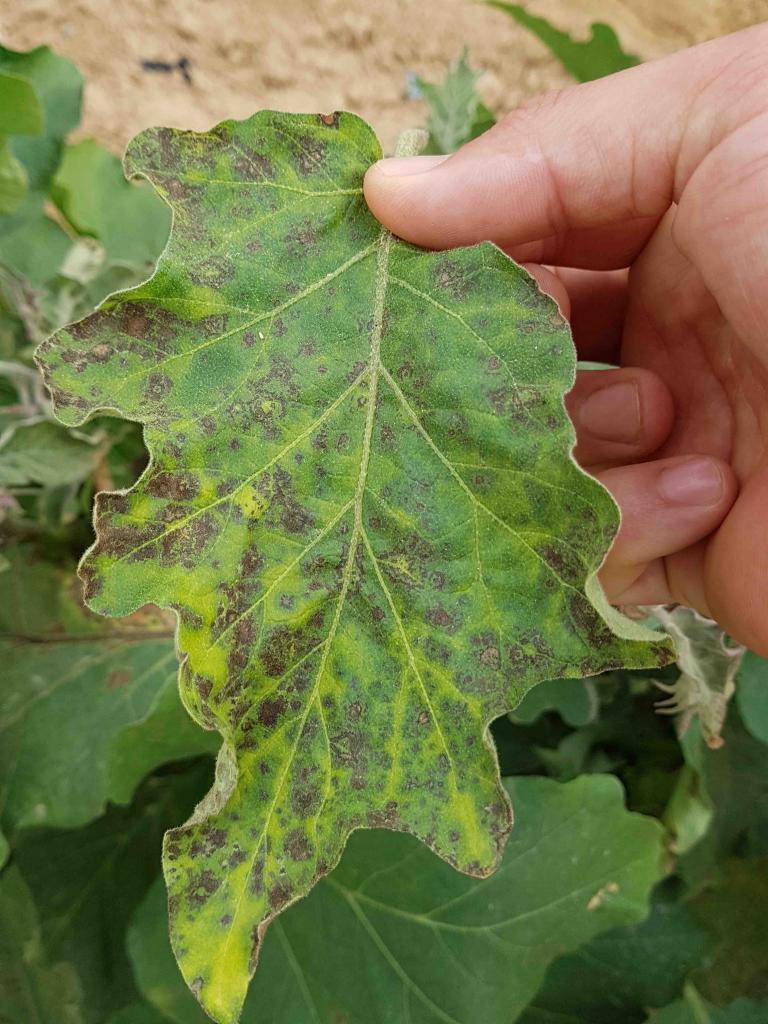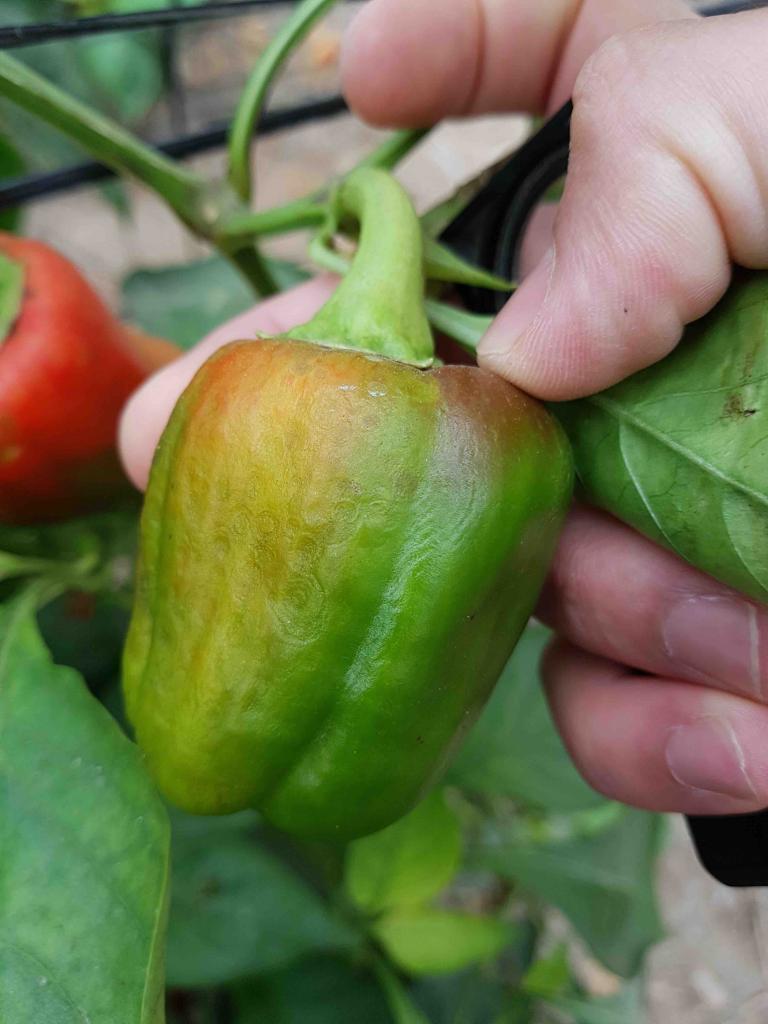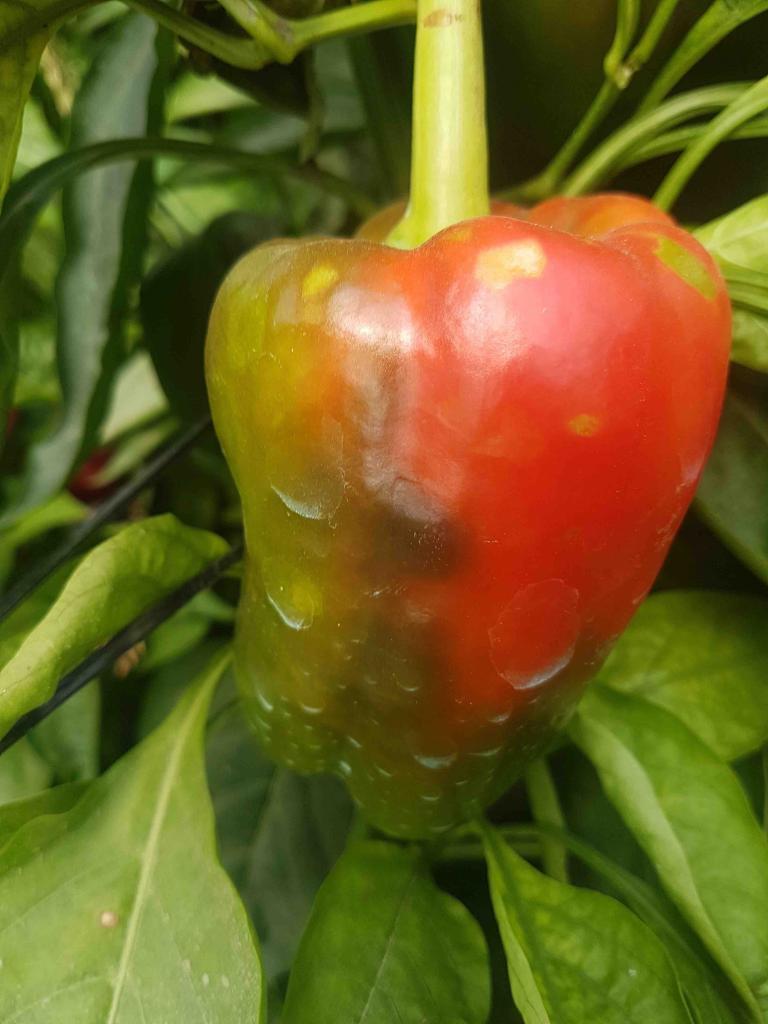TSWV Alert
First symptoms manifest on stems and leaves, and in later stages, signs of the disease will appear on fruits.
Foliage and stems: Appearance of circular stains (about 5.0 cm in diameter) that quickly become necrotic.
Fruits: Scattered round halo-like spots that sometimes take a spiral shape.
TSWV is a viral disease transmitted by the western flower thrips. The infection results in spotting and wilting of infected crops, reduced yields, and in a later stages it leads to plant death. TSWV is not seedborne.
Infected plants with tomato spotted wilt virus should be removed from the field and destroyed as soon as possible. Since the virus may have already spread before the symptoms appeared, focus should be on prevention and the usage of resistant varieties.
Growing inside Structures? Make an effort to keep the structure closed as much as possible and the nets free of holes.
Fighting the vector: Eliminating thrips should be the focus since it prevents the infection, and they are hard to kill. Generally speaking, when the thrips population is high, farmers experience a significant reduction in insecticide efficiency. This forces farmers to implement several consecutive spraying applications.
Methiocarb, Acrinathrin, Dichlorvos, and Formetanate
Spinosad-based products
Successful, commercially available enemies of thrips are of the genus Orius (“minute pirate bug”), omnivorous bugs in the Anthocoridae family.
*Names marked in red are considered to be highly poisonous to beneficial insects.
*Names marked in green are considered to be organic and IPM (integrated pest management) compatible.
Image Gallery


